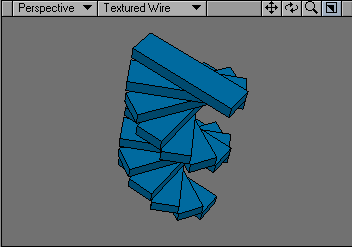
- #Lightwave 3d plugins copy active layers to new object software#
- #Lightwave 3d plugins copy active layers to new object code#
To generate a literal quote character that won't be removed by either the C compiler or
#Lightwave 3d plugins copy active layers to new object code#
(ThisĬan produce some odd-looking code if you're generating evaluate strings using sprintf. If you need a literal backslash, use two in a row.

Quote mark as a literal character in a string argument by preceeding it with the backslash Use them when a string argument contains spaces. Modeler's evaluate function treats double quote marks as delimiters, not (See the CommandSequenceĭocument for definitions of these functions.) Commands issued using the evaluate function will be converted into lookupĪnd execute calls. Name into a code and use an array of DynaValues to pass theĪrguments. The lookup and execute pair of functions, which translate the command When this pattern is seen, it indicates that this part of the image is transparent.Modeler commands are not case-sensitive. If a pixel is transparent or partially transparent, then pixels from layers lower in the stack will show through to some degree.Īs transparent pixels cannot be displayed on a computer monitor, uses a gray and white checkerboard pattern to give a visual clue to transparency.
#Lightwave 3d plugins copy active layers to new object software#
In, Alpha values range from 0 (completely transparent) to 255 (completely opaque). Other software may refer to this range using 0% through to 100% but the idea is the same. uses a technique called alpha compositing to display a layered image on a standard computer monitor.

Pixels and TransparencyĮach layer in a image is composed of pixels. Pixels contain both a color and an alpha, or opacity, value. New to is the ability to reorder layers in the Layers Window using drag-and-drop. Click, hold and drag the layer to a new position in the Layers Window to relocate it. To change a layer's visibility, click the checkbox beside the layer in the Layers Window. This checkbox is also available in the Layer Properties dialog (press F4 to show the active layer's properties). If checkbox is unticked ☐, the layer will not be visible and will be excluded from the composite image.Ī layer which is not visible still forms a part of the image when it is saved in the *.PDN format. If the checkbox is ticked ☑, the layer is visible and will be included in the composite image when it is assembled. Layers can have their visibility toggled on and off. There is a checkbox beside each layer in the Layers Window which controls the layer visibility. To change a layer's Blend Mode, highlight the layer in the Layers Window (see above - the Active Layer) and press F4.Ī new Blend Mode can be selected from the drop-down list. Click on a new Blend Mode to apply it to the layer. Like Opacity, Blend Modes are applied to every pixel in the layer. Layers can have their own blend mode. The blend mode dictates how the layer is merged with lower layers when the image is composed. To change the value, click and drag the slider control or type a new value into the numerical value box.Ī demonstration of layer opacity can be seen below (Layers and Opacity).

Opacity or Alpha values range from 0 (completely transparent) to 255 (completely opaque).

To adjust a layer's Opacity setting, highlight the layer in the Layers Window (see above - the Active Layer) and press the F4 key. Layers can have their own opacity setting. Opacity is applied to every pixel in the layer, so it acts like layer-wide transparency setting. Assign any layer the active status by clicking on the layer in the Layers Window.


 0 kommentar(er)
0 kommentar(er)
